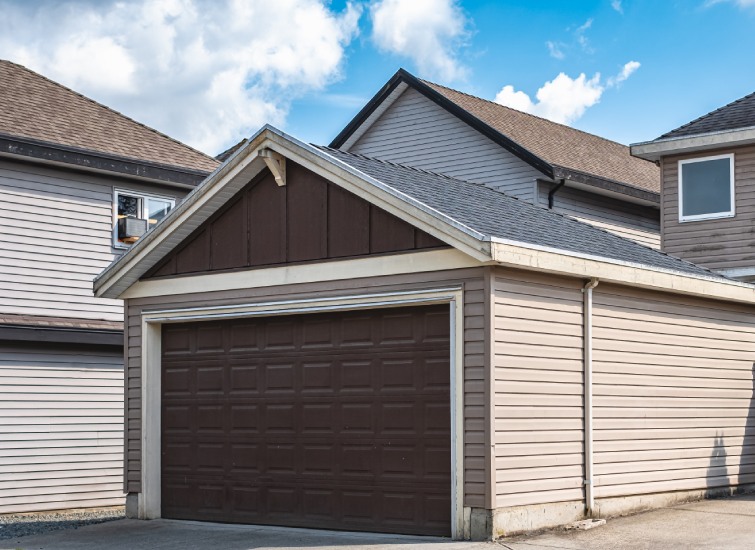Top Tactics For Juggling Multiple Canadian Rentals

Advertisement: Click here to learn how to Generate Art From Text
Managing multiple rental properties in Canada isn’t just about collecting rent; it’s an art of balancing the needs of your tenants with savvy business acumen. You can turn your rental properties into a long-term source of income with the right approach.
Multiple Rental Properties Offers Many Benefits
Increased Passive income
Rental properties are primarily used to generate revenue. With multiple rentals, you’re not just increasing your income, you’re also setting up a stable flow of passive revenue. Each property contributes to the overall income, which can significantly exceed what you’d earn from a single unit. For instance, if one property nets $1,000 per month, owning five could mean a monthly income of $5,000—before expenses, of course. This type of earning potential can be very valuable when planning to build wealth or retire.
Diversification and Risk Management
It can be risky to rely on a single rental property. Renter turnover, unexpected repairs, or regional economic downturns could have a major impact on your rental income. Cash flow. When you own several properties, your risks are spread out. The impact of a vacancy in one house is lessened because you can fall back on others. Your investment portfolio will be able to weather local market fluctuations if it is balanced across different locations and property types.
Potential for Appreciation
Real estate is one of the few investments that appreciates over time.
With a diverse portfolio of properties, you’re not just looking at one chance for your investment to increase in value but multiple opportunities. The net worth of a portfolio increases as property values increase. This allows you leverage more equity which can then be reinvested into new properties. It’s a positive cycle that can lead to significant wealth accumulation for diligent investors who understand market trends and make informed decisions.
Multiple Rental Properties: Challenges and Opportunities
Time Management
Managing rental properties requires a considerable amount of time. Your role extends beyond the signing of lease contracts; it includes ongoing interaction with tenants, scheduling of maintenance, and keeping track of the financial aspect of each property. Individual landlords may find themselves in a time-crunch as tasks pile up.
- Balancing PrioritiesWhen you are juggling multiple tenants and properties, urgent issues can often arise simultaneously. This forces you to prioritize.
- Efficiency is the KeyYour processes will need to be more streamlined the more properties you manage to avoid any mistakes.
Tenant Turnover
High tenant turnover is a symptom as well as a source of problems. Each tenant change requires a number of time-consuming tasks, such as marketing, screening of potential tenants, and preparing an apartment for its new occupants.
Turnover CostsFrequent tenant changes can lead:
- Cash flow disruptions
- Additional costs for cleaning and repairs
- Time lost during screening and move-in processes
Stabilizing TenureYou should aim to implement policies that encourage longer stay to minimize turnover costs.
Maintenance and Repairs
Maintenance and repairs are as diverse as they are inevitable. The complexity of owning multiple properties increases.
- Preventive measuresRegular inspections and maintenance can reduce the need for emergency repairs.
- Rapid ResponseA quick response is important to prevent further damage, and maintain tenant satisfaction.
- Resource AllocationTo ensure that maintenance is done efficiently, it’s important to have the correct vendors and service personnel at hand. Failure to do so could have detrimental effects both on the condition and relationship of your property with tenants.
Effective Property Management Strategies
When you’re tasked with the oversight of several rental properties, it’s imperative that you execute efficient Property management strategies. This area can be addressed effectively to prevent potential issues, smooth operations and result in a more lucrative investment.
Develop a solid screening process
A strict tenant screening process is the cornerstone of successful real estate management. By carefully examining each applicant, you can reduce the risk of future rent defaults or property damage.
- Start by filling out a detailed rental form. This will gather all of the necessary information, such as employment history and past tenancies.
- Rent payment capacity can be confirmed by conducting a credit check to determine the financial reliability of the tenant.
- Seek out references, especially from former landlords, to gauge the applicant’s tenancy record.
- Verify the tenant’s identity and income in order to prevent fraud and ensure that they can afford the rent.
Communication Strategies that Work
Communication is key to property management, particularly when dealing with multiple units.
- Use specific email addresses and telephone numbers for each property to facilitate targeted and streamlined interaction.
- Schedule regular updates to handle maintenance requests and tenant concerns.
- Implement a protocol for emergency situations to ensure rapid and effective responses.
Use Property Management Software
The rise of technological advancements has greatly benefited property management. Here’s why you should consider integrating property management software into your operations:
- Management tasks can be streamlined with real-time access to financial information, tenant information and maintenance schedules.
- Automated features reduce manual work for rent collection and renewals of leases.
- Data analytics can help inform decisions about property investments and improvements.
Considerations of Financial Nature

Assessing Cash Flow
Cash flow is essential to managing multiple rental properties. You’ll want to forecast the potential return on each property to ensure sustainability and growth in your portfolio. Analytical tools can help you in this process. By entering data specific to each property, you can see projected ROI metrics like net operating income (NOI), cash-on-cash returns and more. For example, with a rental property’s annual NOI at $6,000 and a purchase value of $100,000, your cap rate would be 6%.
Metric
Calculation
Example
Net Operating Income (NOI).
Cash Flow – Mortgage Payment
$6,000
Cap Rate
NOI / Property Value
6%
Cash on Cash Refund
Cash Flow Before Tax / Total Cash Investment
10%
Tracking Income and Expenses
To effectively manage the financial aspect, it is important to keep track of both income and expenses.
- Rent PaymentsSet and collect the correct amount of rent punctually.
- Mortgage PaymentsEnsure that these are sustainable, and that they’re paid on time.
- InsurancePaying on time and within the budget is essential.
- Property TaxesConsider this in your financial planning every year.
- UtilitiesHandle these according to your lease agreements.
- Fees/FinesAvoid additional costs if you meet all regulatory requirements.
Tax implications
Understanding tax implications, such as depreciation, can be very beneficial. Residential property depreciates over a period of 27.5 years. This can lower your taxable earnings. If you own property worth $150,000 this could result in a deduction of $5,455.
Renter’s income tax reporting is important. As your portfolio grows, so do potential tax benefits. Your cumulative depreciation could lower your overall income tax bracket. This is why it’s important to keep meticulous records and prepare your taxes.
Conclusion
To efficiently manage multiple rental properties, you need to have a strategic planning approach and keep a close eye on your finances. By diligently tracking your cash flow and using analytical tools, you’ll be better equipped to forecast returns and maintain a robust revenue stream. Keep meticulous records, and make sure you understand the tax implications. With these strategies in place, you’re set to navigate the complexities of Property management: Maximize your investment potential.

‘ Credit:
Original content by www.canadianrealestatemagazine.ca – “Top Tactics For Juggling Multiple Canadian Rentals”
Read the complete article at https://www.canadianrealestatemagazine.ca/expert-advice/top-tactics-for-juggling-multiple-canadian-rentals/




